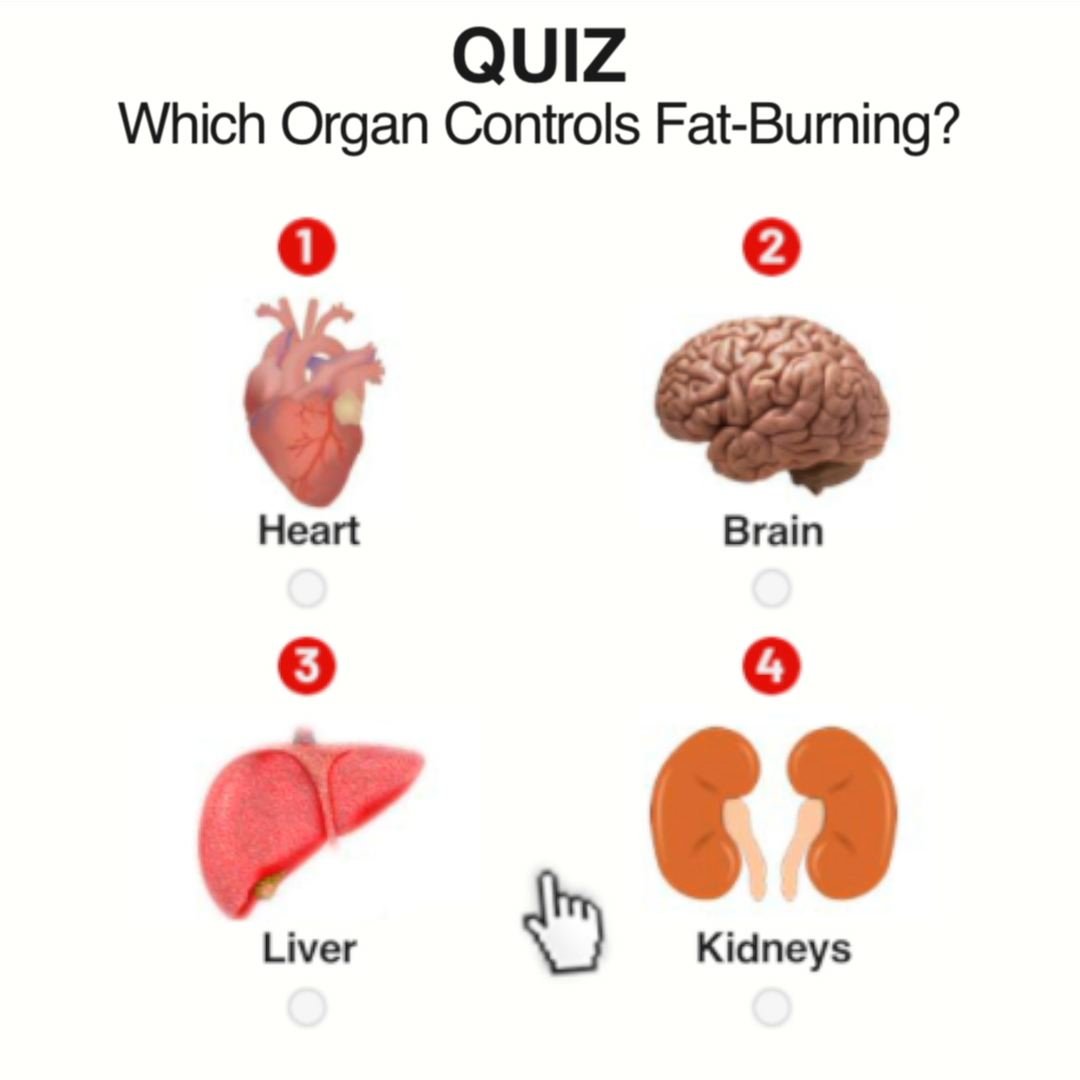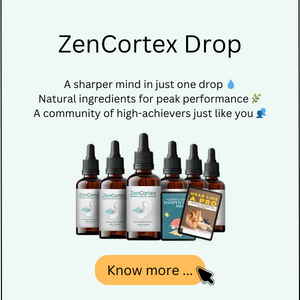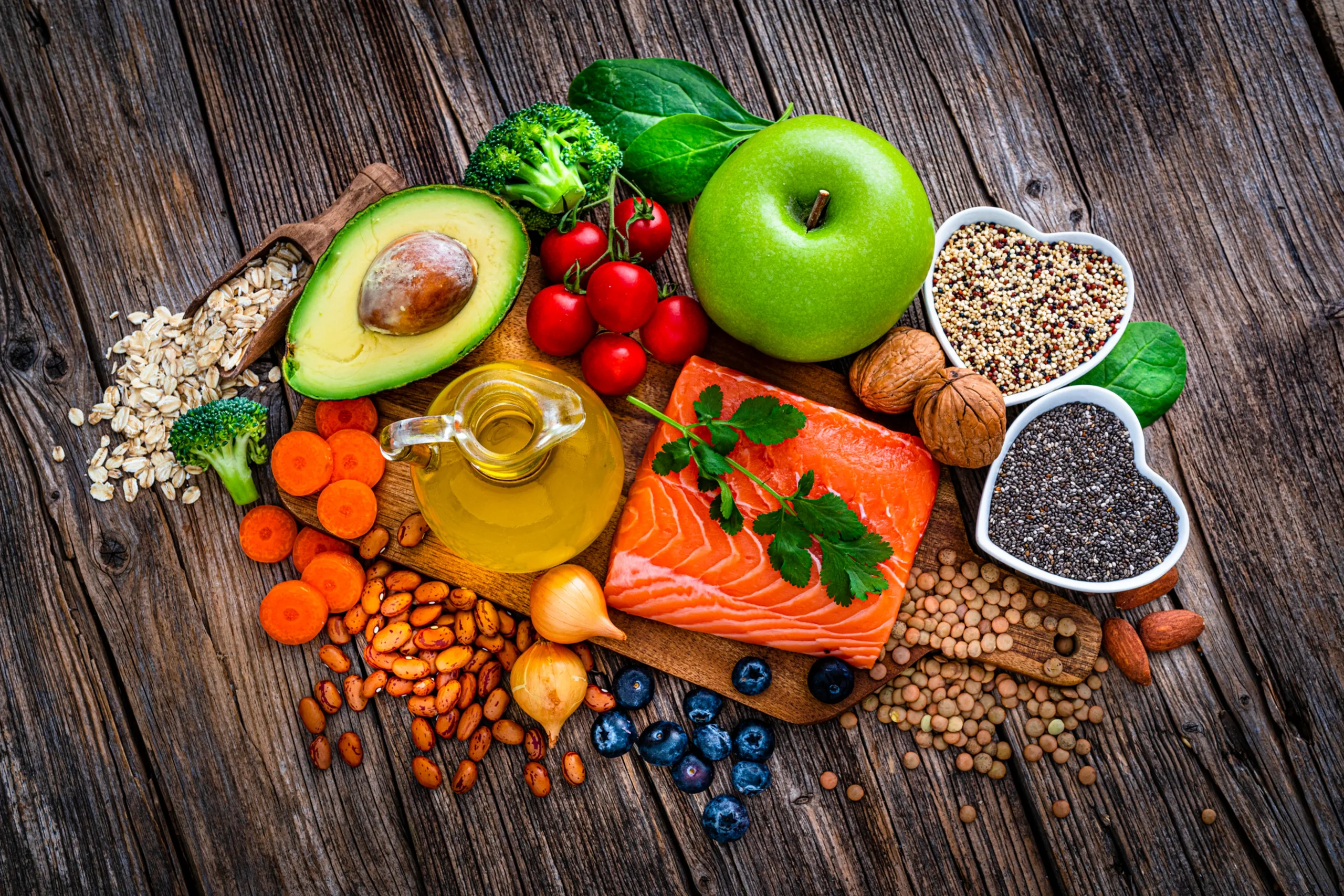Nutraceuticals Market Analysis 2024: $510 Bn to $987 Bn by 2035
The nutraceuticals market stands as one of the most dynamic and rapidly expanding sectors within the global food and beverage industry, representing a revolutionary convergence of nutrition science and health-conscious consumer behavior. As the boundaries between food, medicine, and wellness continue to blur, nutraceuticals have emerged as powerful tools for preventive healthcare, offering consumers the promise of enhanced health benefits beyond basic nutrition. This burgeoning industry reflects a fundamental shift in how people approach their health and well-being, moving from reactive treatment models to proactive prevention strategies.
The term “nutraceuticals” itself embodies this transformation, combining the concepts of nutrition and pharmaceuticals to create products that bridge the gap between conventional foods and medicines. These innovative products have captured the attention of health-conscious consumers worldwide, driving unprecedented market growth and attracting significant investment from both established food companies and emerging biotechnology firms. As we examine this remarkable industry, we uncover a complex ecosystem of scientific innovation, consumer demand, regulatory challenges, and commercial opportunities that continues to reshape the global health and wellness landscape.
Nutraceuticals Market Overview and Growth Landscape
- According to Vantage Market Research, Global nutraceuticals market valued between USD 510 Billion in 2024, with projections reaching USD 987.1 Billion by 2035.
- Market exhibits strong growth trajectory with CAGR ranging from 6.20% across different forecasts.
- Nutraceuticals blend nutritional and therapeutic benefits, increasingly integrated into daily consumption patterns.
- Products derived from food sources provide health benefits beyond basic nutrition, including disease prevention and health maintenance.
- Market encompasses dietary supplements, functional foods, and beverages fortified with bioactive compounds.
Scope of Nutraceuticals
Nutraceuticals encompass a broad category of products derived from food sources that provide health benefits beyond basic nutritional value. These products are specifically designed to promote overall health, prevent diseases, and support specific physiological functions, representing a sophisticated approach to nutrition that leverages the therapeutic potential of natural compounds. The nutraceuticals universe includes dietary supplements, functional foods, and beverages fortified with vitamins, minerals, antioxidants, probiotics, and herbal extracts.
The scope of nutraceuticals extends far beyond traditional vitamins and minerals, incorporating cutting-edge formulations that utilize bioactive compounds from various natural sources. These products cater to consumer preferences for natural and preventive healthcare solutions, aiming to enhance well-being, boost immunity, improve digestion, and manage chronic conditions. The industry has evolved to include specialized formulations targeting specific health concerns, from cognitive function and joint health to cardiovascular support and anti-aging benefits.
Our comprehensive Nutraceuticals Market report is ready with the latest trends, growth opportunities, and strategic analysis. View Sample Report PDF.
Historical Development and Industry Evolution
The nutraceuticals industry has undergone remarkable transformation over the past several decades, evolving from simple vitamin supplements to sophisticated bioactive formulations. The concept gained significant momentum as scientific research began to unveil the therapeutic properties of various food-derived compounds, leading to increased consumer awareness and acceptance of functional nutrition products.
The industry’s evolution has been marked by several key phases, beginning with the recognition of essential vitamins and minerals, progressing through the discovery of antioxidants and their health benefits, and culminating in today’s advanced understanding of personalized nutrition and targeted therapeutic applications. This progression has been supported by advances in extraction technologies, formulation science, and bioavailability enhancement techniques that have revolutionized product development.
Current Market Size and Valuation (2024 to 2035)
The global nutraceuticals market reached an impressive valuation of USD 510 billion in 2024, reflecting the industry’s robust growth trajectory and widespread consumer adoption. This substantial market size underscores the significant role that nutraceuticals now play in the global health and wellness economy, representing billions of consumer choices made daily in pursuit of better health outcomes.
Projections indicate that the nutraceuticals market will nearly double in size over the next decade, reaching USD 987.1 billion by 2035. This remarkable growth projection reflects not only increasing consumer demand but also expanding market penetration in emerging economies, product innovation, and the integration of nutraceuticals into mainstream healthcare and wellness strategies.
The projected compound annual growth rate of 6.20% from 2025 to 2035 demonstrates the sustained momentum expected in this sector. This growth rate significantly outpaces many traditional food and beverage categories, highlighting the unique position nutraceuticals occupy at the intersection of nutrition, health, and consumer wellness trends.
For Nutraceuticals Market Research Report and updates detailed: View Full Report Now!
Key Market Drivers Accelerating Growth
- Rising prevalence of chronic diseases: Nearly 830 million people globally have diabetes, with approximately half not receiving treatment.
- Aging global population seeking health maintenance and vitality solutions.
- Heightened health consciousness and consumer preference for preventive healthcare approaches.
- Growing disposable incomes: India’s per capita disposable income grew 8% in FY24, supporting premium product purchases.
- Consumer preference for natural ingredients and clean-label products driving plant-based and organic nutraceuticals demand.
- Technological innovations in encapsulation, bioavailability enhancement, and AI-driven formulation.
Rising Consumer Focus on Preventive Healthcare
The shift toward preventive healthcare represents one of the most significant drivers propelling the nutraceuticals market forward. Consumers increasingly recognize that maintaining health through proactive measures is more effective and cost-efficient than treating diseases after they develop. This paradigm shift has been accelerated by rising healthcare costs, increased awareness of lifestyle-related chronic conditions, and growing understanding of the role nutrition plays in disease prevention.
The prevalence of lifestyle-related chronic conditions, including obesity, cardiovascular disease, and diabetes, has pushed consumers to seek proactive health solutions. The World Health Organization reports that nearly 830 million people globally have diabetes, with approximately half not receiving adequate treatment, highlighting the urgent need for preventive approaches. This reality has created a substantial market opportunity for nutraceuticals that support metabolic health, cardiovascular function, and overall wellness.
Increased Awareness About Nutrition and Wellness
Contemporary consumers demonstrate unprecedented sophistication in their understanding of nutrition science and its impact on health outcomes. This enhanced awareness stems from improved access to health information, educational initiatives by healthcare professionals, and the proliferation of digital health platforms that provide personalized nutrition guidance.
The modern consumer actively seeks products that offer specific health benefits, driving demand for nutraceuticals with scientifically validated ingredients and targeted formulations. This trend is particularly evident in the growing interest in functional ingredients such as probiotics for digestive health, omega-3 fatty acids for cardiovascular support, and adaptogenic herbs for stress management.
Advances in Product Formulation and Innovation
Technological innovations in encapsulation, bioavailability enhancement, and AI-driven formulation have invigorated new product development across the nutraceuticals industry. These advances enable manufacturers to create more effective products with improved stability, enhanced absorption, and targeted delivery mechanisms that maximize therapeutic benefits.
The application of biotechnology and nanotechnology in nutraceutical formulation has opened new possibilities for creating products with enhanced efficacy and novel delivery systems. Companies are leveraging partnerships to develop specialized nutraceutical products and extraction technologies, as evidenced by recent collaborations between pharmaceutical companies and nutraceutical manufacturers.
Major Restraints and Market Challenges
- Regulatory complexities and inconsistent global standards presenting barriers to market entry.
- Complex product registration processes in certain regions challenging market expansion.
- Variability in regulations across countries potentially delaying product approvals and limiting market access.
- Quality control and standardization issues affecting consumer confidence and regulatory compliance.
- Market fragmentation creating intense competitive pressures among numerous players.
Regulatory Hurdles Across Major Regions
Despite the industry’s growth potential, regulatory complexities and inconsistent global standards present significant restraints. The nutraceuticals market operates within a complex regulatory environment that varies significantly across different countries and regions, creating challenges for companies seeking to expand their global presence.
Regulatory frameworks such as EFSA guidelines in Europe ensure product quality and safety but also create barriers to entry for some manufacturers. The need for regulatory compliance, safety testing, and efficacy validation requires substantial investment and expertise, particularly challenging for smaller companies attempting to enter the market.
Product Quality, Safety, and Standardization Issues
Quality control and standardization remain critical challenges throughout the nutraceuticals industry. The diverse nature of raw materials, varying extraction methods, and differences in manufacturing processes can lead to inconsistencies in product quality and potency. These issues not only affect consumer confidence but also complicate regulatory approval processes and international trade.
The growing demand for nutraceutical product testing reflects industry recognition of these challenges. The global nutraceutical product testing market is estimated to grow from USD 2.93 billion currently to USD 7.33 billion by 2035, at a CAGR of 9.6%, driven by stringent regulatory guidelines and the need to ensure safety, efficacy, and quality.
Market Fragmentation and Competitive Pressures
The nutraceuticals market is characterized by significant fragmentation, with numerous players ranging from large multinational corporations to small specialized manufacturers. This fragmentation creates intense competitive pressures, price competition, and challenges in establishing brand differentiation and market share.
Limited accessibility remains a constraint that is being addressed through e-commerce platforms and direct-to-consumer sales channels. However, the proliferation of online sales channels has also intensified competition and created new challenges in maintaining product authenticity and consumer trust.
Opportunities and Strategic Trends in 2024 and Beyond
- Personalized nutrition solutions driven by advancements in genomics and individual health data.
- Digital transformation with companies enhancing e-commerce platforms and digitizing supply chains.
- Celebrity partnerships and promotional strategies for brand building and market penetration.
- Sustainable sourcing and manufacturing practices aligning with consumer environmental concerns.
- Evidence-based formulations with clean-labeled traits showing strong growth potential.
Innovations in Personalized Nutrition
Personalized nutrition represents one of the most promising opportunities in the nutraceuticals market, driven by advancements in genomics, biomarker analysis, and individual health data. Companies are increasingly developing customized supplement regimens based on individual nutritional needs, genetic profiles, and health objectives.
The rise of personalized nutrition solutions is exemplified by companies like Persona Nutrition, which launched a white-label service in November 2024 to help other brands enter the personalized dietary supplement space. These programs incorporate proprietary algorithms, customized vitamin assessments, and drug-nutrient interaction checkers to deliver sophisticated, tailored nutrition solutions.
Expansion of Plant-Based and Natural Product Segments
The growing consumer preference for natural, plant-based ingredients has created substantial opportunities for nutraceutical manufacturers. The herbal nutraceuticals market alone is estimated at USD 66400 million in 2025 and projected to reach USD 124700 million by 2035, registering a CAGR of 6.4%.
Rising awareness of the long-term side effects of synthetic pharmaceuticals, coupled with growing trust in traditional remedies, has led to expanded consumption of herbal supplements. This trend aligns with broader sustainability concerns and consumer interest in clean-label products that feature recognizable, natural ingredients.
Digital Transformation in Nutraceutical Retail
The digital transformation of nutraceutical retail has accelerated dramatically, with online sales channels becoming increasingly dominant. E-commerce platforms provide manufacturers with direct access to consumers, enabling personalized marketing, subscription-based models, and enhanced customer engagement.
Digital platforms also facilitate the integration of health monitoring technologies, allowing consumers to track their health metrics and adjust their nutraceutical consumption accordingly. This technological integration creates opportunities for data-driven product recommendations and improved customer loyalty.
To learn more about the global trends impacting the future of Nutraceuticals Market research report, Download a PDF Sample
Global Segmentation by Product Type
- Dietary Supplements: Including vitamins, minerals, amino acids, proteins, herbal supplements, omega-3 fatty acids, and enzymes.
- Functional Foods: Comprising fortified foods, prebiotic and probiotic products, functional snacks and bars, nutritional powders and mixes.
- Functional Beverages: Featuring sports drinks, energy drinks, fortified juices, tea and coffee, dairy-based beverages.
- Nutraceutical confectionery market projected to reach USD 38980 million by 2035, growing at 7.3% CAGR.
Dietary Supplements: Vitamins, Botanicals, Minerals
Dietary supplements represent the largest segment within the nutraceuticals market, encompassing vitamins, minerals, amino acids, proteins, herbal supplements, omega-3 fatty acids, and enzymes. This segment benefits from widespread consumer familiarity and established distribution channels, making it accessible to a broad consumer base.
The vitamin and mineral segment continues to show strong growth, driven by increasing awareness of nutritional deficiencies and the role of micronutrients in optimal health. Herbal supplements, including products featuring ginger, turmeric, and other traditional botanical ingredients, are experiencing particularly robust growth as consumers seek natural alternatives to synthetic compounds.
Functional Foods: Carotenoids, Dietary Fibers, Probiotics
Functional foods enriched with bioactive ingredients represent a rapidly expanding segment of the nutraceuticals market. These products include fortified foods, prebiotic and probiotic products, functional snacks and bars, and nutritional powders and mixes. The integration of beneficial compounds into everyday food products makes functional nutrition more accessible and convenient for consumers.
Probiotics and prebiotics have gained significant traction due to growing awareness of the gut-brain connection and the role of digestive health in overall wellness. Carotenoids, valued for their antioxidant properties and role in eye health, are increasingly incorporated into functional food products targeting specific health concerns.
Functional Beverages: Energy & Sports Drinks, Juices
The functional beverages segment includes sports drinks, energy drinks, fortified juices, functional teas and coffees, and dairy-based beverages. This segment appeals to consumers seeking convenient ways to incorporate nutritional benefits into their daily routines, particularly active individuals and health-conscious professionals.
Energy and sports drinks continue to dominate this segment, but there is growing interest in more sophisticated formulations that combine hydration with targeted nutritional benefits. Functional juices and non-alcoholic beverages are expanding to include ingredients like adaptogens, nootropics, and specialized vitamin formulations.
Performance Analysis of Dietary Supplement Products
- Dietary supplements dominate the overall nutraceuticals market across multiple regions.
- Omega-3 fatty acids show high demand for preventing and managing chronic conditions like heart disease.
- Growing emphasis on heart health and wellness significantly increasing omega-3 supplement popularity.
- Herbal supplements and plant-based proteins experiencing robust growth due to natural ingredient preferences.
- 80% of American adults use nutritional supplements according to the United States Pharmacopeia Convention.
Market Share of Key Supplement Categories
The dietary supplements segment demonstrates diverse performance across different product categories, with vitamins and minerals maintaining the largest market share due to their established consumer base and clinical validation. However, emerging categories such as adaptogens, nootropics, and specialized protein formulations are gaining significant market traction.
Omega-3 fatty acids represent a particularly strong performing category, driven by extensive research supporting their cardiovascular and cognitive benefits. The rising awareness of these advantages and growing emphasis on heart health and overall wellness have significantly increased the popularity of omega-3 supplements.
Growing Demand for Proteins, Amino Acids, and Omega Fatty Acids
Protein and amino acid supplements have experienced remarkable growth, particularly among fitness enthusiasts and aging populations seeking to maintain muscle mass and metabolic function. Plant-based protein formulations are gaining market share as consumers increasingly seek sustainable and easily digestible protein sources.
The amino acid segment benefits from growing understanding of specific amino acids’ roles in various physiological processes, from muscle synthesis to neurotransmitter production. Specialized formulations targeting specific health outcomes, such as branch-chain amino acids for athletic performance, are driving category expansion.
Role of Specialty Carbohydrates and Fibers
Specialty carbohydrates and dietary fibers represent an emerging growth area within the dietary supplements market. These products address growing consumer awareness of the importance of digestive health and the role of fiber in maintaining optimal gut microbiome balance.
Prebiotic fiber supplements, resistant starches, and specialized carbohydrate formulations designed to support metabolic health are gaining recognition among health-conscious consumers. The scientific understanding of how different fiber types affect digestive health and overall wellness continues to drive innovation in this segment.
Functional Foods Segment Insights
- Probiotics and prebiotics gaining traction due to growing awareness of gut health benefits.
- Bioactive ingredients such as probiotics, omega-3, plant-based proteins, and herbal extracts driving functional food growth.
- Fortified foods and functional snacks expanding to meet consumer convenience and nutrition demands.
- Clean-label and organic formulations aligning with consumer preference for natural products.
Innovations in Carotenoids and Fatty Acids
The functional foods segment has witnessed significant innovation in the incorporation of carotenoids and fatty acids into everyday food products. Carotenoids, including lutein, zeaxanthin, and lycopene, are increasingly added to foods targeting eye health and general antioxidant support.
Fatty acid fortification, particularly with omega-3 compounds, has become standard practice in many functional food categories. Innovations in microencapsulation technology have enabled manufacturers to incorporate these sensitive compounds into a wider range of food products while maintaining stability and bioavailability.
Health Benefits Driving Fiber and Prebiotic Demand
The growing recognition of fiber’s role in digestive health, immune function, and metabolic regulation has driven substantial demand for fiber-enriched functional foods. Prebiotic fibers, which support beneficial gut bacteria, are increasingly incorporated into snack foods, beverages, and meal replacement products.
Consumer education about the gut-brain connection and the impact of digestive health on overall wellness has created a receptive market for products featuring specialized fiber formulations. This trend is supported by mounting scientific evidence linking gut health to immune function, mental health, and chronic disease prevention.
Vitamins and Mineral-Enriched Food Products
Traditional vitamin and mineral fortification continues to evolve, with manufacturers developing more sophisticated delivery systems and targeting specific consumer demographics. Bioavailability enhancement through chelation, liposomal delivery, and time-release formulations has improved the effectiveness of fortified foods.
The development of food products targeting specific life stages, from infant nutrition to senior health, has created opportunities for highly specialized vitamin and mineral formulations. These products address the unique nutritional needs of different populations while maintaining palatability and convenience.
Functional Beverages Market Dynamics
- Sports and energy drinks maintaining strong market presence in the functional beverages segment.
- Fortified juices and dairy-based beverages expanding with innovative ingredient combinations.
- Tea and coffee products increasingly fortified with functional ingredients for added health benefits.
- Non-alcoholic alternatives gaining popularity among health-conscious consumers.
Popularity of Energy and Sports Drinks
Energy and sports drinks continue to dominate the functional beverages segment, driven by active lifestyles and increasing participation in fitness activities. However, the category is evolving beyond traditional caffeine and sugar-based formulations to include more sophisticated ingredient profiles featuring natural energizers, adaptogens, and recovery-supporting compounds.
The sports nutrition segment benefits from growing scientific understanding of exercise physiology and recovery nutrition. Products targeting specific athletic performance aspects, from pre-workout energy to post-exercise recovery, are gaining market share among both professional athletes and recreational fitness enthusiasts.
Adoption of Functional Juices and Non-Alcoholic Options
Functional juices represent a rapidly growing segment within functional beverages, appealing to consumers seeking natural, fruit-based nutrition delivery systems. These products often feature combinations of traditional fruit juices with added vitamins, antioxidants, and specialized botanical extracts.
The trend toward alcohol alternatives has created opportunities for functional non-alcoholic beverages that provide mood enhancement, stress relief, or cognitive support through natural ingredients. These products appeal to health-conscious consumers seeking social beverages without alcohol’s negative health impacts.
Future Outlook for Novel Beverage Formulations
Innovation in functional beverages continues to accelerate, with manufacturers exploring novel ingredients, delivery systems, and target applications. Nootropic beverages designed to support cognitive function, adaptogenic drinks for stress management, and personalized beverage formulations represent emerging opportunities.
The integration of technology with beverage consumption, including smart packaging and personalized nutrition apps, creates new possibilities for consumer engagement and product differentiation. These innovations position the functional beverages segment for continued growth and market expansion.
Regional Analysis: Key Markets and Growth Hotspots
- Asia-Pacific leads globally with 39.84% market share in 2024 and fastest growth rates.
- South Korea shows highest growth at 5.6% CAGR from 2025-2035.
- North America commands approximately 34% market growth and estimated to grow at fastest rate during forecast period.
- U.S. market valued at USD 163700 billion in 2024 with 5.3% CAGR from 2025-2030.
- Canada faces health challenges with 2.5% population undernourished and 25% experiencing high stress levels.
United States: Largest Market Characteristics
The United States maintains its position as the largest nutraceuticals market globally, with a projected CAGR of 5.3% from 2025 to 2035. The U.S. market benefits from high consumer spending power, advanced research and development capabilities, and well-established distribution networks that facilitate product innovation and market penetration.
American consumers demonstrate strong preference for scientifically validated products and are willing to pay premium prices for high-quality nutraceuticals. The market is characterized by intense competition among established players and continuous innovation in product formulations and delivery systems.
Europe: Regulatory Shifts and Innovation Trends
The European nutraceuticals market is projected to grow at a CAGR of 5.2% from 2025 to 2035, driven by consumer shifts toward preventive health and stringent regulatory frameworks that ensure product quality. Countries such as Germany, France, and Italy lead market demand, with strong consumer preference for natural and organic products.
The UK market, with a projected CAGR of 5.0%, demonstrates progressive growth driven by increasing intake of functional foods and dietary supplements. European consumers increasingly focus on health, creating greater demand for products high in vitamins, minerals, and antioxidants, while regulatory guidelines ensure consistent product quality and safety.
Asia-Pacific: Fastest-Growing Regional Market
The Asia-Pacific region represents the fastest-growing market for nutraceuticals, with countries like Japan and South Korea leading in consumer awareness and product adoption. Japan’s market, with a projected CAGR of 5.4%, benefits from high consumer awareness and governmental support for functional food regulation.
South Korea shows the highest growth rate at 5.6% CAGR, driven by K-beauty and wellness trends that have created strong demand for skin-enhancing and anti-aging supplements. The region’s growth is supported by increasing disposable incomes, growing health consciousness, and cultural acceptance of traditional and functional foods.
Competitive Landscape and Leading Companies
- Key players include: Herbalife Nutrition Ltd., Danone S.A., Pfizer, BASF, Nature’s Bounty, PepsiCo Inc., Kellogg Company, and Amway Corporation.
- Companies leverage strong brand recognition, extensive distribution networks, and substantial R&D investments.
- Strategic focus on portfolio diversification and positioning nutraceuticals as daily essentials rather than occasional supplements.
- Enhanced digital strategies including e-commerce platform fortification and celebrity partnerships.
Overview of Top Players and Their Strategies
The nutraceuticals market features a diverse competitive landscape with major players including Herbalife Nutrition Ltd., Danone S.A., Pfizer, BASF, Nature’s Bounty, PepsiCo, Inc., Kellogg Company, and Amway Corporation. These companies leverage strong brand recognition, extensive distribution networks, and substantial R&D investments to maintain their market positions.
Key players are focusing on portfolio diversification, positioning nutraceuticals as daily essentials rather than occasional supplements. Strategic initiatives include expanding into emerging markets, developing personalized nutrition solutions, and investing in sustainable sourcing and manufacturing practices.
Recent Mergers, Partnerships, and Industry Developments
The industry has witnessed significant partnership and acquisition activity as companies seek to enhance their capabilities and market reach. Recent examples include Akums Drugs & Pharmaceuticals’ in-licensing agreement with Caregen in December 2024 to introduce specialty nutraceuticals tailored to Indian consumers.
Companies are increasingly leveraging partnerships to develop specialized products and extraction technologies, combining botanicals and biotics to create next-generation dietary supplement solutions. These collaborations enable companies to access new technologies, expand their ingredient portfolios, and accelerate product development timelines.
Scope of the Industry
- Nutraceuticals market represents convergence of nutrition science and health-conscious consumer behavior.
- Strong growth trajectory supported by chronic disease prevalence, aging populations, and preventive healthcare trends.
- Technology integration and personalization driving next-generation product development and consumer engagement.
- Regional variations in growth patterns with Asia-Pacific leading expansion and North America showing robust demand.
- Industry evolution continues toward evidence-based, personalized, and digitally-enabled nutrition solutions.
The nutraceuticals market stands at the forefront of a health and wellness revolution that is reshaping how consumers approach nutrition and disease prevention. With a current market valuation of USD 510 billion in 2024 and projected growth to USD 987.1 billion by 2035, this industry represents one of the most dynamic and promising sectors in the global economy. The sustained growth rate of 6.20% CAGR reflects not only increasing consumer demand but also the industry’s ability to innovate and adapt to evolving health trends and scientific discoveries.
The convergence of several powerful trends—rising healthcare costs, increasing chronic disease prevalence, growing health consciousness, and advancing nutrition science—has created an unprecedented opportunity for nutraceuticals to play a central role in global health and wellness strategies. As consumers increasingly embrace preventive healthcare approaches and seek natural, scientifically validated solutions to support their health goals, the nutraceuticals industry is well-positioned to meet these evolving needs through continued innovation and market expansion.
Market Segmentation
| Parameter | Details |
|---|---|
| Segment Covered |
|
| Companies Covered |
|
| Customization Scope | Enjoy complimentary report customization—equivalent to up to 8 analyst working days—with your purchase. Customizations may include additions or modifications to country, regional, or segment-level data. |
| Pricing and purchase options | Access flexible purchase options tailored to your specific research requirements. Explore purchase options |
Questions [FAQs.]:
What factors are driving the rapid growth of the nutraceuticals market?
The rapid growth of the nutraceuticals market is driven by several interconnected factors. The rising prevalence of lifestyle-related chronic conditions, including obesity, cardiovascular disease, and diabetes, has pushed consumers toward proactive health solutions. Heightened health consciousness among consumers, coupled with a rapidly aging global population, creates sustained demand for preventive healthcare products. Technological innovations in encapsulation, bioavailability enhancement, and AI-driven formulation have enabled the development of more effective products. Additionally, increasing consumer preference for clean-label, natural, and personalized wellness products continues to fuel market expansion.
How do regulatory policies impact market entry and product innovation?
Regulatory policies significantly impact both market entry and product innovation in the nutraceuticals industry. Regulatory complexities and inconsistent global standards present substantial barriers to entry, particularly for smaller companies. Different regulatory frameworks across regions, such as EFSA guidelines in Europe and FDA regulations in the United States, require companies to invest heavily in compliance, safety testing, and efficacy validation. However, these regulations also ensure product quality and safety, ultimately building consumer confidence and supporting long-term market growth. The growing nutraceutical product testing market, projected to reach USD 7.33 billion by 2035, reflects the industry’s response to stringent regulatory requirements.
Which regions are projected to lead market expansion through 2035?
Asia-Pacific is projected to be the fastest-growing regional market, with South Korea leading at a 5.6% CAGR and Japan at 5.4% CAGR from 2025 to 2035. The United States remains the largest market with a projected 5.3% CAGR, while the European Union is expected to grow at 5.2% CAGR. These regions benefit from different growth drivers: Asia-Pacific from increasing disposable incomes and cultural acceptance of functional foods, the U.S. from high consumer spending and R&D capabilities, and Europe from stringent quality standards and consumer preference for natural products.
What Was the Capacity, Production Value, Cost and PROFIT of the Nutraceutical Products Market?
The nutraceuticals market demonstrates strong production value and profitability metrics. The global market is valued at USD 510 billion in 2024, with projections to reach USD 987.1 billion by 2035, representing substantial production capacity and value creation. The industry maintains healthy profit margins due to consumer willingness to pay premium prices for scientifically validated health products. Production costs are increasingly influenced by investments in quality testing, regulatory compliance, and innovative formulation technologies, while companies focus on sustainable sourcing and manufacturing practices to meet evolving consumer expectations.
How do nutraceuticals differ from pharmaceuticals?
Nutraceuticals differ from pharmaceuticals in several fundamental ways. While pharmaceuticals are synthetic drugs designed to treat specific diseases and require extensive clinical trials and regulatory approval, nutraceuticals are products derived from food sources that provide health benefits beyond basic nutrition. Nutraceuticals focus on disease prevention and health maintenance rather than treatment of existing conditions. They are generally considered safer with fewer side effects compared to pharmaceuticals, and they face less stringent regulatory requirements. However, the growing trend toward evidence-based nutraceuticals is increasing the scientific rigor applied to product development and efficacy validation.
Which Product is Expected to Lead Sales Potential for Companies?
Dietary supplements, particularly those featuring omega-3 fatty acids, vitamins, and herbal ingredients, are expected to lead sales potential for companies. Omega-3 fatty acids show particularly strong performance due to extensive research supporting their cardiovascular and cognitive benefits. The herbal nutraceuticals segment, valued at USD 66400 million in 2025 and projected to reach USD 124700 million by 2035 with a 6.4% CAGR, represents significant growth potential. Personalized nutrition solutions and plant-based formulations are emerging as high-growth opportunities, while functional foods and beverages continue to expand their market presence through convenient delivery formats and innovative ingredient combinations.
Source link
Share this article:












